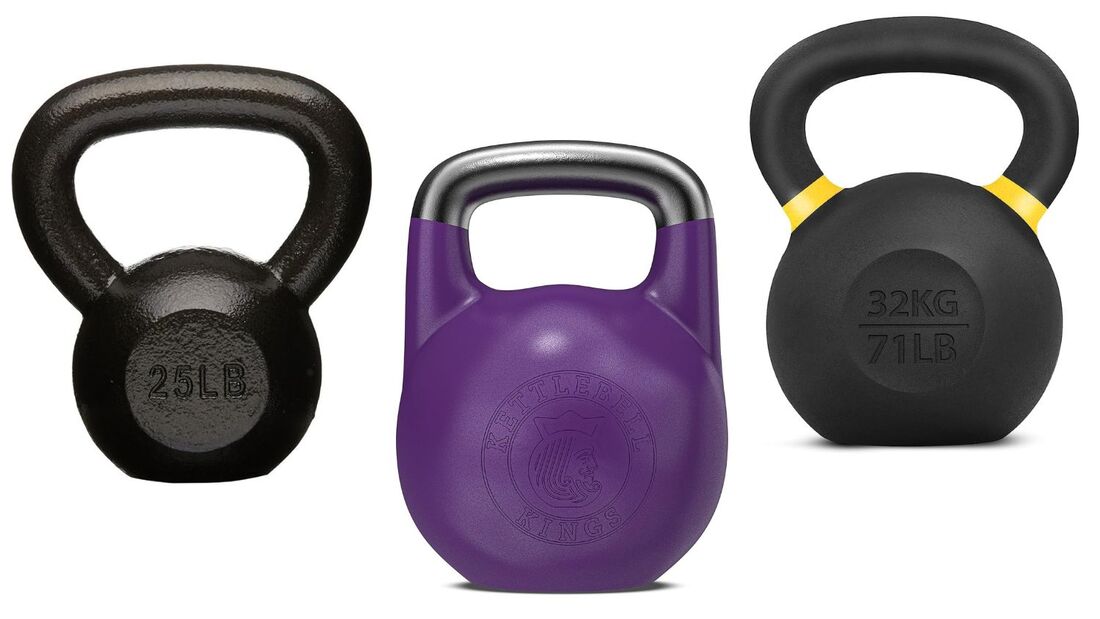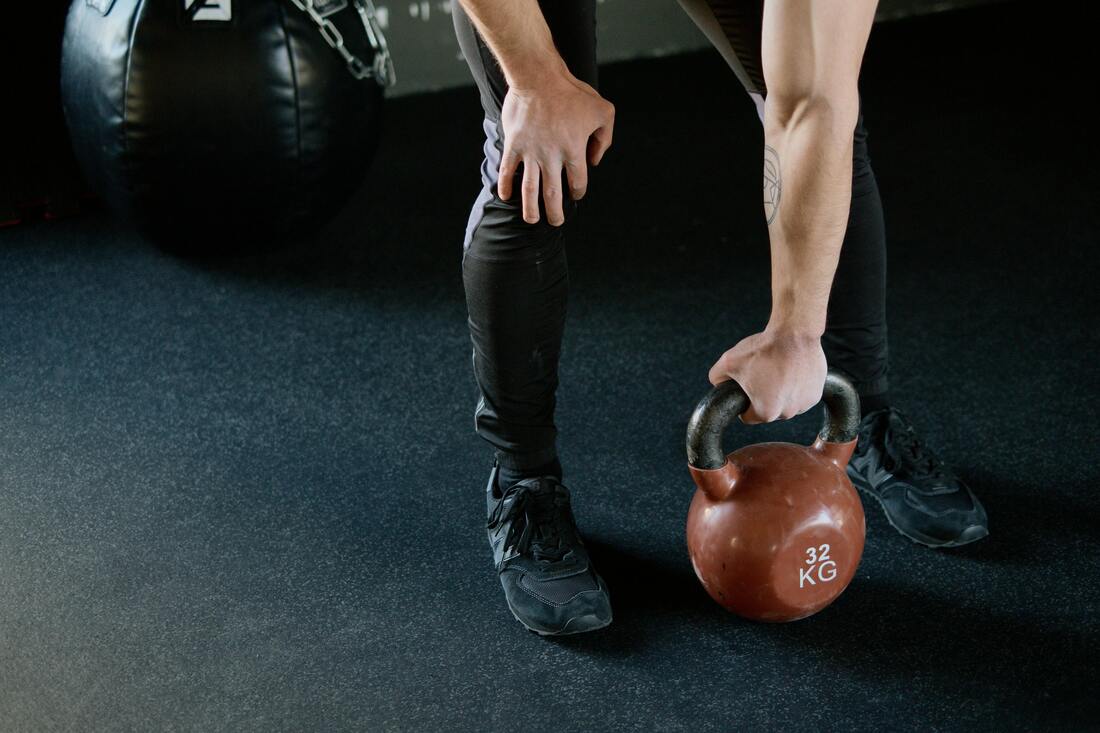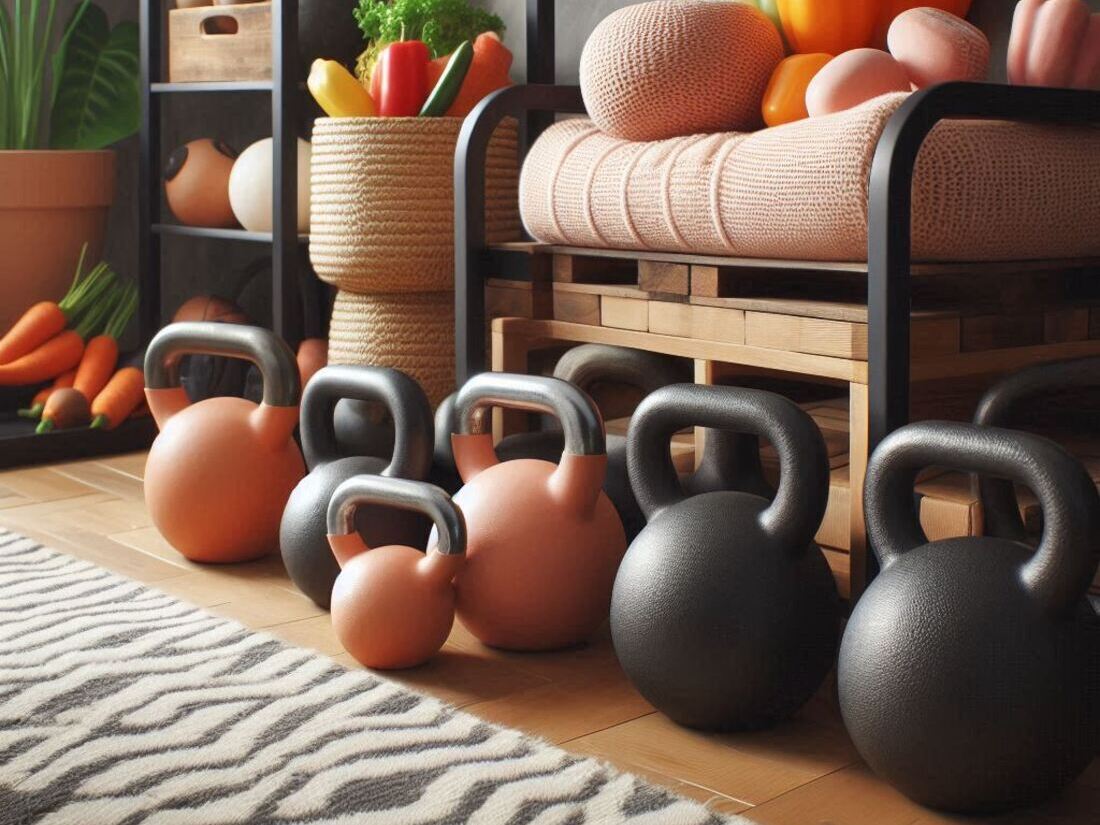Tired of the same old gym routine?
Cramped for space in your home gym?
It’s time to discover the untapped potential of kettlebells.

Often overlooked, these versatile weights pack a powerful punch, delivering a full-body workout that challenges your strength, endurance, and coordination like never before.
Traditional weightlifting can be bulky, expensive, and time-consuming.
Kettlebells offer a compact and efficient solution, allowing you to achieve impressive results in a minimal amount of space.
Let’s explore the world of kettlebells and unlock the secrets to maximizing your fitness potential.
Understanding Kettlebells
Kettlebells are cast-iron weights with a handle, offering a unique and challenging workout experience.
Different Types of Kettlebells

- Cast iron kettlebells: The most common type, offering durability and affordability.
- Competition kettlebells: Designed for specific kettlebell sports, with standardized dimensions and handles.
- Rubber-coated kettlebells: Provide a non-slip grip and protect floors from damage.
(Note: Above are affiliate links) helps you understand the varieties of kettlebells out there in the market.
Choosing the Right Kettlebell Weight
Selecting the appropriate kettlebell weight depends on your fitness level and workout goals:
- Beginners: Start with a lighter kettlebell (10-15 lbs) to master form and build strength.
- Intermediate: Use a moderate weight (15-25 lbs) for varied exercises and challenges.
- Advanced: Incorporate heavier kettlebells (25+ lbs) for strength and power development.
Table: Kettlebell Weights for Different Fitness Levels
Here is a table to assist readers in selecting the appropriate kettlebell weight,
| Fitness Level | Recommended Kettlebell Weight (kg) |
|---|---|
| Beginner | 8-12 |
| Intermediate | 12-16 |
| Advanced | 16+ |
By understanding the different types and choosing the right weight, you can optimize your kettlebell workouts.
Kettlebell Basics: Form and Technique
Mastering proper form is essential for maximizing the benefits of kettlebell training and preventing injuries.
Proper Grip and Posture

- Neutral grip: Hold the kettlebell handle with a neutral grip, avoiding excessive wrist flexion or extension.
- Strong core engagement: Maintain a tight core throughout all exercises for stability and power.
- Upright posture: Avoid rounding your back and maintain a neutral spine.
Common Kettlebell Movement Patterns
- The Swing: A dynamic exercise that engages the posterior chain and core. Focus on hip hinge and power generation.
- The Clean: Transitioning the kettlebell from the floor to the rack position (shoulder level).
- The Snatch: A more advanced movement involving a full-body extension to bring the kettlebell overhead.
- The Turkish Get-Up: A complex exercise that challenges balance, coordination, and core strength.
Tips for Avoiding Injuries
- Start with lighter weights: Gradually increase weight as you build strength and confidence.
- Focus on proper form: Prioritize technique over heavy weights.
- Listen to your body: Pay attention to any pain or discomfort.
- Warm-up and cool-down: Prepare your body for exercise and aid recovery.
By mastering these fundamentals, you’ll lay the groundwork for a successful kettlebell training journey.
Kettlebell Workouts for Strength and Conditioning
Kettlebells offer a dynamic and efficient way to build strength, power, and endurance.
Let’s explore some workout options:
Full-Body Kettlebell Workouts
Combine strength and conditioning with a full-body routine:
- Warm-up: Light cardio, dynamic stretches, and kettlebell swings.
- Workout: Kettlebell clean and press, squats, lunges, rows, Turkish get-ups.
- Cool-down: Static stretches and deep breathing.
Targeting Specific Muscle Groups

Isolate muscle groups for focused development:
- Chest: Kettlebell push-ups, chest press, flyes.
- Back: Kettlebell rows, pull-ups (assisted with kettlebell), deadlifts.
- Arms: Kettlebell bicep curls, tricep extensions, hammer curls.
- Legs: Kettlebell squats, lunges, Romanian deadlifts, swings.
- Core: Kettlebell Russian twists, planks, leg raises.
Building Explosive Power with Kettlebells
Incorporate explosive movements to enhance athletic performance:
- Kettlebell swings: Focus on power generation through the hips.
- Kettlebell snatches: Develop explosive strength and coordination.
- Clean and jerk: Build full-body power and explosiveness.
By incorporating these workouts into your routine, you can maximize the benefits of kettlebell training and achieve your fitness goals.
Kettlebell Workouts for Fat Loss and Endurance
Kettlebells can be an effective tool for burning calories and improving cardiovascular endurance:
High-Intensity Interval Training (HIIT) with Kettlebells

Combine short bursts of intense exercise with brief recovery periods:
- Workout structure: Alternate between 30 seconds of high-intensity kettlebell exercises (swings, cleans, snatches) and 30 seconds of rest. Repeat for several rounds.
Circuit Training for Calorie Burning
Create a circuit combining kettlebell exercises with bodyweight movements:
- Workout structure: Perform a series of exercises (kettlebell swings, push-ups, squats, lunges) with minimal rest between sets.
Kettlebell-Based Cardio Workouts
Focus on continuous movement and elevated heart rate:
- Kettlebell complexes: Perform a series of kettlebell exercises without putting the weight down.
- Kettlebell dancing: Incorporate rhythmic movements and choreography with kettlebell exercises.
By incorporating these workout strategies, you can effectively burn calories and improve your cardiovascular fitness.
Kettlebell Variations and Advanced Techniques
To challenge yourself and maximize the benefits of kettlebell training, explore these advanced techniques:
Kettlebell Complexes and Flows

Combine multiple kettlebell exercises into a fluid sequence:
- Clean and press complex: Transition seamlessly from the clean to the overhead press.
- Snatch and squat complex: Combine explosive power with lower body strength.
- Turkish get-up flow: Incorporate multiple variations of the Turkish get-up for increased challenge.
Combining Kettlebells with Other Equipment
Enhance your workouts by combining kettlebells with other training tools:
- Resistance bands: Add resistance to kettlebell exercises for increased challenge.
- Dumbbells: Incorporate dumbbell exercises for complementary muscle groups.
- Bodyweight exercises: Combine kettlebells with bodyweight movements for a full-body workout.
Kettlebell Sport and Competitive Training
Explore the world of kettlebell sport with competitions focused on strength, endurance, and technique:
- Long cycle: A series of exercises performed with one kettlebell.
- Biathlon: Combining ballistic and static exercises.
- Jerk: Lifting the kettlebell from the floor to overhead in one continuous motion.
By incorporating these advanced techniques and exploring competitive aspects, you can take your kettlebell training to the next level.
Benefits of Kettlebell Training
Kettlebell training offers a wide range of benefits for individuals of all fitness levels:
- Full-body workout efficiency: Engage multiple muscle groups simultaneously for time-efficient workouts.
- Improved strength, power, and endurance: Develop explosive power, muscular strength, and cardiovascular endurance.
- Enhanced cardiovascular health: Elevate heart rate and burn calories through dynamic movements.
- Core engagement and stability: Challenge your core muscles for improved balance and stability.
By incorporating kettlebell training into your routine, you can experience a transformative impact on your overall fitness.
Kettlebell Safety and Maintenance
Proper form and maintenance are crucial for a safe and effective kettlebell training experience:
Kettlebell Safety
- Prioritize form: Focus on mastering proper technique before increasing weight or complexity.
- Warm-up and cool-down: Prepare your body for exercise and aid recovery.
- Listen to your body: Pay attention to any pain or discomfort and adjust your workout accordingly.
- Safe lifting practices: Avoid jerky movements and maintain a controlled pace
Kettlebell Storage and Maintenance

- Storage: Store kettlebells in a safe and accessible location, preventing damage.
- Cleaning: Wipe down kettlebells after each use to remove sweat and prevent corrosion.
- Inspect for damage: Regularly check for cracks or chips in the kettlebell.
By following these guidelines, you can ensure a safe and enjoyable kettlebell training experience.
FAQs About Kettlebells
To address common questions about kettlebell training, here are some frequently asked questions:
- Can beginners use kettlebells? Yes, kettlebells are suitable for all fitness levels. Start with lighter weights and focus on proper form.
- Are kettlebells effective for weight loss? Kettlebell workouts can help burn calories and contribute to weight loss when combined with a balanced diet.
- Can I build muscle with kettlebells? Absolutely! Kettlebells can effectively build strength and muscle mass.
- How often should I use kettlebells? Incorporate kettlebell training into your routine 2-3 times per week for optimal results.
- What is the best way to store kettlebells? Store kettlebells in a cool, dry place, away from direct sunlight.
Testimonials
“Kettlebell workouts have completely transformed my fitness routine. I’ve never felt stronger or more toned.” – Alex, 35
“I love the versatility of kettlebells. I can do a full-body workout in a small space.” – Sarah, 28
“Kettlebell training has helped me improve my balance and coordination, and I’ve even noticed a difference in my posture.” – David, 42
These testimonials highlight the benefits and satisfaction experienced by kettlebell users.
Conclusion

Kettlebells offer a dynamic and efficient way to enhance your fitness journey.
By incorporating kettlebell training into your routine, you can build strength, power, endurance, and improve overall athleticism.
Don’t underestimate the transformative power of this versatile tool. Unleash your inner athlete and discover the countless benefits of kettlebell workouts.
Ready to revolutionize your fitness routine?
Explore our range of high-quality kettlebells and accessories to find the perfect match for your goals.
Visit our website Reliable Home Fitness Website to discover workout ideas and expert tips.
References
National Strength and Conditioning Association (NSCA) The Role of Kettlebells in Strength and Conditioning.
American Council on Exercise (ACE) Study Reveals Kettlebells Provide Powerful Workout in Short Amount of Time



